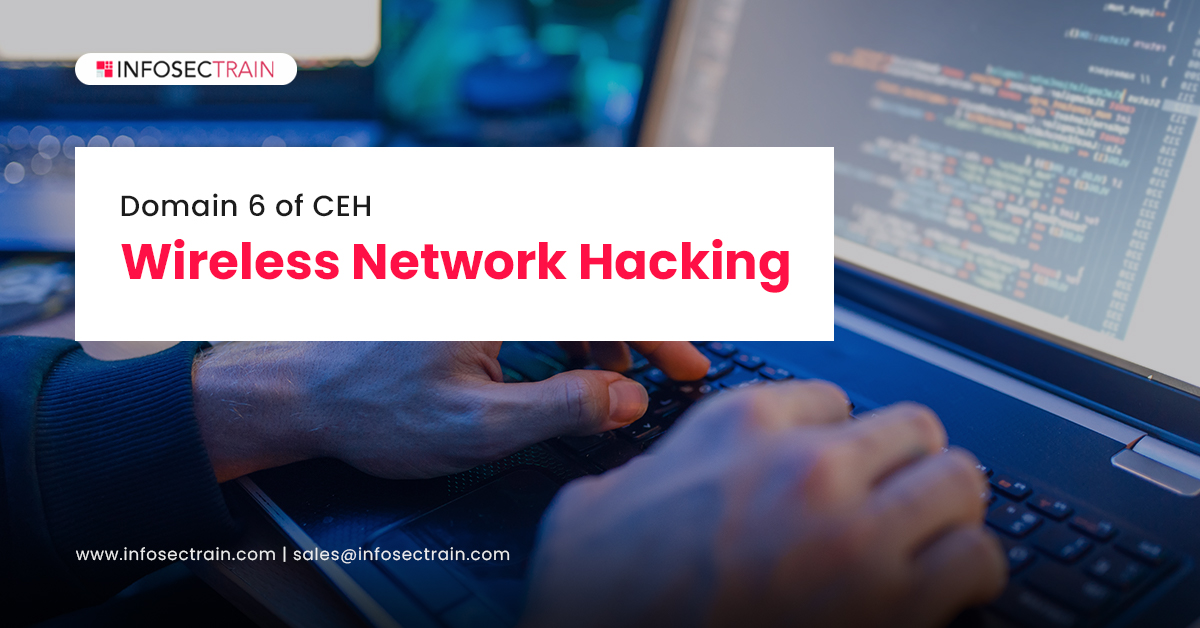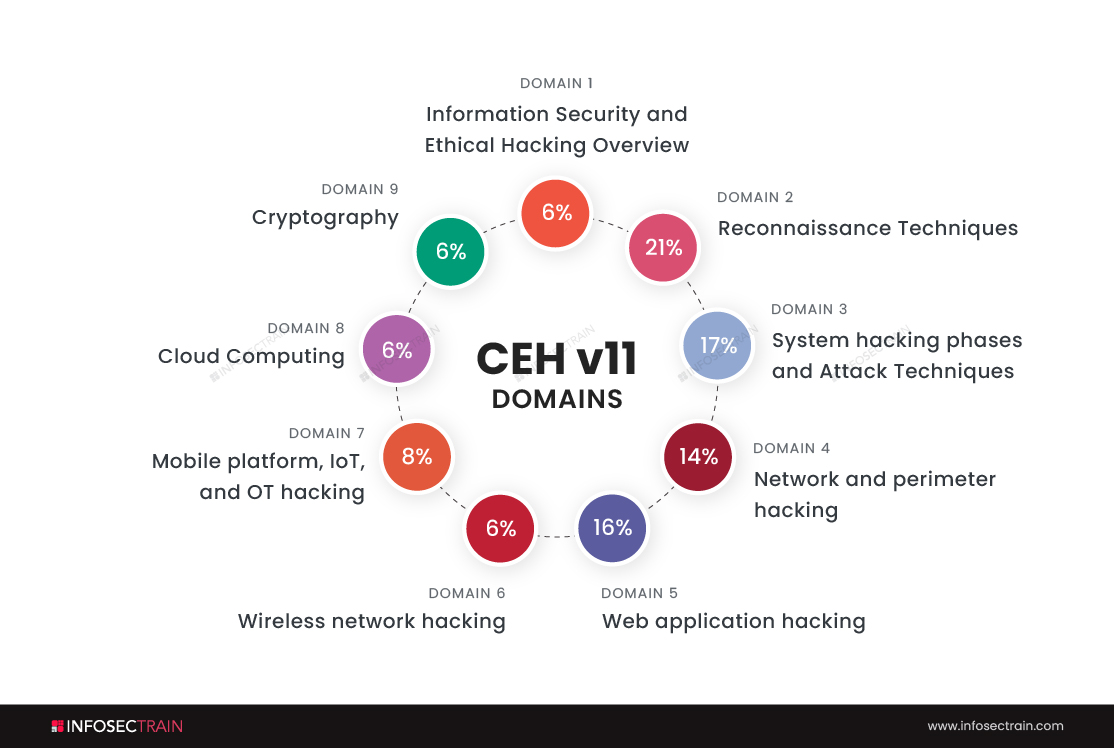Domain 6 of CEH: Wireless Network Hacking

Domains of CEH
- Information Security and Ethical Hacking Overview-6%
- Reconnaissance Techniques-21%
- System hacking phases and Attack Techniques-17%
- Network and perimeter hacking-14%
- Web application hacking-16%
- Wireless network hacking-6%
- Mobile platform, IoT, and OT hacking-8%
- Cloud Computing-6%
- Cryptography-6%

We will discuss the sixth domain of CEH, which is ‘wireless network hacking.’
What is a wireless network?
Basically, a group of computers connected together with various wires is called a network. Similarly, a group of computers connected together with the help of radio waves in a limited space is called a wireless network.
One of the best advantages of using a wireless network is the devices within a network can move from one location/area to another, yet they can share the data and stay connected with the services in the network. The second and best advantage of using a wireless network is that installing it is very cheap and faster than installing a wired network.
Advantages of using a wireless network:
There are various advantages of using a wireless network. A few of them are:
Accessibility: Wireless networks do not require any wired connection so that users can communicate and connect even when they are not at the same location. For example, we can access our office networks without cables and adapters just by using wireless networks.
Cost-effective: Using wireless networks is cost-effective because installing them is way cheaper than installing wired networks.
Flexible: In this pandemic, without these wireless networks, there wouldn’t have been any possibility of Work From Home. In my opinion, the flexibility of wireless networks is the only thing that is saving the corporate world.
Even though there are many advantages, there is one big disadvantage that may entirely ruin the reputation of wireless networks, and that is security. Yes, though these wireless networks are cost-effective, flexible, and accessible from anywhere, they are less secure when compared to wired networks.
Wireless networks are easy to attack, so we must be very conscious while using them. When you are using a wireless network, try to avoid public connections. For example, assume you went to a mall, and for Wi-Fi, we will register as a guest user on the public network. This can attract many attackers.
A pro-life tip: Instead of logging in as a guest user, using your mobile data is a safer way.
Now, let us see some of the tools that hackers and ethical hackers use to attack a wireless network.
Tools used for wireless hacking:
Kismet: Kismet is a packet sniffer, network detector, and intrusion detection system for 802.11 LANs. Kismet works for Bluetooth, SDRs, Wi-Fi, and other wireless protocols. The main job of Kismet is to gather the data packets traveling in its environment and use them to detect hidden Wi-Fi networks so that attackers can exploit them.
Wi-Fi phisher: Wi-Fi phisher is a tool used by attackers to install automated phishing attacks against Wi-Fi networks to obtain user credentials. Wi-Fi phisher is a social engineering attack that doesn’t require brute force, unlike any other attacking method.
inSSIDer: inSSIDer is a popular Wi-Fi scanner for Microsoft Windows, and OS X. InSSIDer can function as a Wi-Fi scanner, and it can find open wireless access points, measure the signal strength, and save a log with GPS data.
Aircrack-ng: Aircrack-ng is one of the finest password cracking tools. Aircrack-ng analyses the network packets and cracks the network password. FMS, PTW, Korek, and other WEP password attacks are supported by Aircrack-ng.
Wireless hacking techniques:
Social Engineering: Social engineering is nothing other than a cybersecurity threat, a type of intrusion that takes advantage of the weakness in your human workforce or security system to gain access to the company’s network. Hackers manipulate employees, even senior staff, with complicated emotional and trickery manipulations to get an organization’s sensitive information.
Chatty technicians: If you are using a system or network for your personal jobs at home, you may usually think you are less prone to cyberattacks. That is when you believe everyone who messages or calls you as technical support. For example, you may receive calls from unknown people posing as bank employees, and when they ask for your credentials, you will simply believe them and hand over your credentials to them. That is how attackers can get your sensitive data.
Garbage collecting/dumpster diving: Have you ever thrown away your credit card statement into a trash bin without shredding it? and left the place with full conviction that attackers would not take that information because it is a garbage area? That is where you went wrong.
Attackers who use social engineering techniques usually check the trash around companies for unshredded credit card statements from which they can get your sensitive bank information.
CEH with InfosecTrain
InfosecTrain is one of the leading training providers with a pocket-friendly budget. We invite you to join us for an unforgettable journey with industry experts to gain a better understanding of the Certified Ethical Hacker course. Courses can be taken as live instructor-led sessions or as self-paced courses, allowing you to complete your training journey at your convenience.







 1800-843-7890 (India)
1800-843-7890 (India)